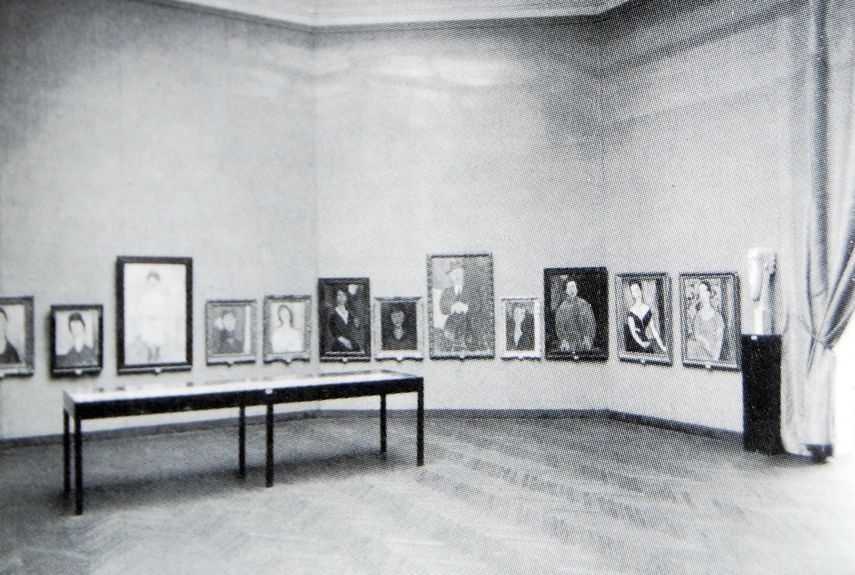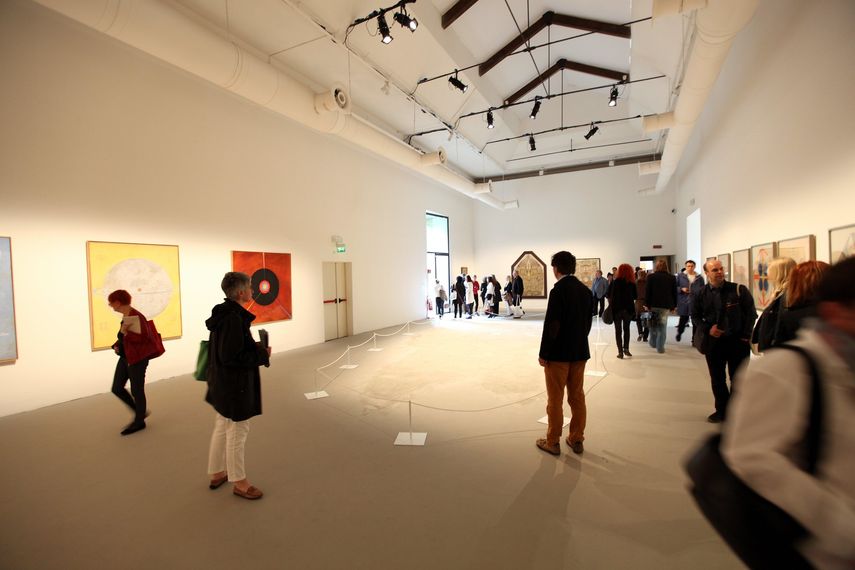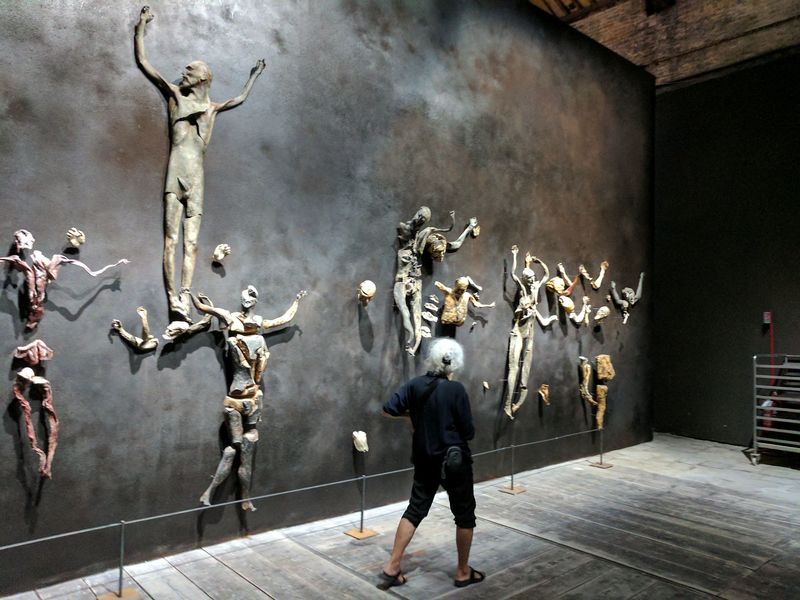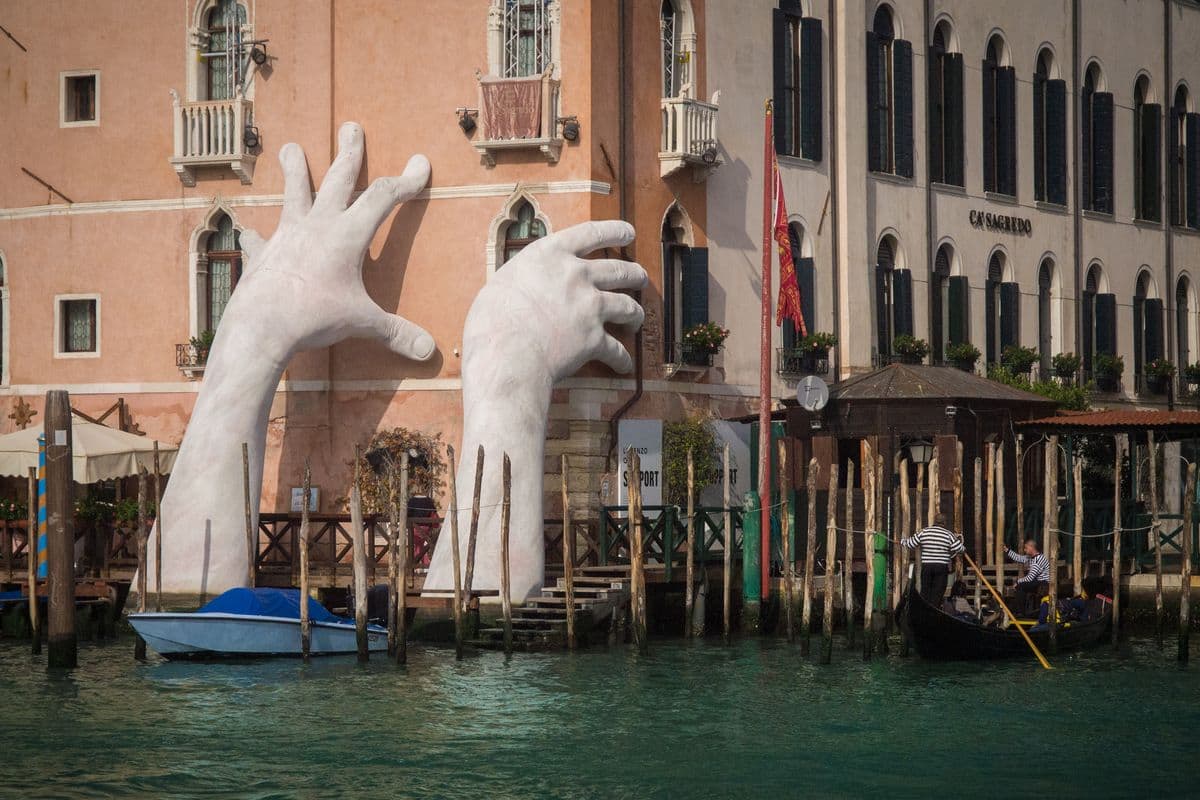[ad_1]
One of the most anticipated international art events of the year, the 58th Venice Biennale opened its doors, divided into two exhibitions at the main venues, the Arsenale and the central pavilion in the Giardini. Running under the title May You Live in Interesting Times, it highlights a general approach to making art and a view of art’s social function as embracing both pleasure and critical thinking.
Every odd-numbered year, more than half a million art enthusiasts descend on Venice to visit the Art Biennale, a show on which all other biennales are based. For over 120 years, Venice Biennale has been one of the most prestigious cultural institutions in the world. Often described as “the Olympics of the art world”, the event saw some of the most renowned 20th- and 21st-century artists presenting their work there and welcomed a range of important critics and art historians as curators of the main exhibitions and the National Pavilions, all contributing to generating the “pluralism of voices” for which the event has been known for.
Throughout decades, La Biennale di Venezia has maintained its ability to anticipate new trends in art, while presenting works and artists of every period under renewed perspectives. How has the event gained its prestige? Let’s dive deeper into the Venice Biennale history.

The Early Venice Biennale History
In 1893, the Venetian City Council, headed by its mayor Riccardo Selvatico, passed a resolution to set up an Esposizione Biennale Artistica Nazionale. The following year, it was decided that the event should adopt a “by invitation” system, reserve a section of the Exhibition for foreign artists and admit works by uninvited Italian artists which would be selected by a jury. In an official announcement, Selvatico declared that the biennale would “affirm [Venice’s] faith in the moral energies of our nation, and […] all the noblest activities of the modern spirit, without any distinction of nationality.”
Although it was initially scheduled to open on April 22nd, 1894, the first Esposizione Internazionale d’Arte della Città di Venezia was inaugurated on April 30th, 1895 by the Italian King and Queen, Umberto I and Margherita di Savoia. The event was visited by 224,000 visitors, a figure that many 20th-century iterations struggled to equal, immediately becoming established as a vital source of tourism and commerce for the city.
As the event emerged as one of the leading international art shows, the number of works accepted rose steadily. Some of the early editions welcomed works by artists such as Gustav Klimt, Auguste Renoir, Gustave Courbet and Pablo Picasso, whose work was soon removed in fear that it might shock the public.
The first national pavilion opened in the Giardini di Castello in 1907 – the Belgian pavilion designed by Léon Sneyers, followed by Hungary and Great Britain in 1909, France in 1912, Russia in 1914 and the U.S. in 1930. The final country to build a pavilion in the Giardini was South Korea, which opened its space in 1995. Each country built its own pavilion, covering the costs of construction, upkeep and programming. As Giardini became out of space at some point, other countries started staging their shows in the Arsenale and other venues all over the city.
Between the two wars, the biennial was under the control of Benito Mussolini’s government, becoming haunted by a specter of nationalism, such as a prize for the best maternity subject. During this period, three new events were established – Biennale Musica, Venice Film Festival, credited as the first film festival in history, and Biennale Teatro. The Biennale Architettura and Biennale Danza were established much later, first in 1978 and the second in 2003.
Due to World War II, Art Biennale closed its gates between 1942 and 1948. However, the curator and critic Lawrence Alloway wrote of the 1940 edition:
That Europe’s communication system was able to move over 3,000 artworks and a substantial number of civilian visitors to an art exhibition, while half of Europe was fighting for survival, is as impressive as it is bizarre.
The revivified biennale of 1948 brought the latest trends in contemporary and avant-garde art, including works by artists such as Georges Braque, Marc Chagall, James Ensor and Paul Klee, along with a Pablo Picasso retrospective and the display of Peggy Guggenheim’s personal collection.

Responsiveness to the Times
In the post-war years, the Venice Biennale continued to develop, placing a spotlight on many avant-garde movements, creating a bridge between the public and contemporary art. By awarding the top prize to Robert Rauschenberg in 1964, the first American artist to win the Grand Prize and the youngest to date, it helped introduce Pop Art into the canon of art history. Due to the 1968 student protests, which attacked the Biennale aiming to bring down a pillar of the Italian art establishment which, in their eyes, combined art and money in an unholy alliance, the event abandoned the Grand Prize, bringing it back in 1986.
In 1972, the curator Mario Penelope introduced for the first time an overarching theme for the exhibition – Work or Behaviour. Ever since, the event has been running under unifying themes, establishing a common thread between the disparate curatorial visions of the contributing countries, while responding to the times through artistic production and research. The Biennale Venice 1974 was entirely dedicated to Chile, which had undergone the coup that put General Augusto Pinochet in power the year before. Hydrangea Allende, the widow of Salvador Allende, reached to inaugurate it.
Since the 1980s, a new Artistic Director has been nominated for each biennale – with Harald Szeemann, who curated the 1999 and 2001 editions, being the only exception. In 2005, the Biennale was for the first time curated by two women, Maria de Corral and Rosa Martinez. De Corral organized The Experience of Art which included 41 artists, from past masters to younger figures, while Rosa Martinez took over the Arsenale with Always a Little Further, bringing together 49 artists. The first African-born curator was selected only in 2015, when Okwui Enwezor took the reins.

Venice Biennale Controversies
Despite its stature, Venice Biennale courted several controversies in its 124-long history.
During the 1922 Biennale, the retrospective of Modigliani collected a lot of criticism on the life of the artist, due to his candid portrayal of the painter’s hedonistic lifestyle, alcoholism, and drug use, while the exhibition of African sculpture was promoted by organizers in a derogatory sense as being “primitive”.
In 1990, the American AIDS activist arts collective Gran Fury addressed the Catholic Church’s stance on sex and contraception in a provocative set of posters at the Arsenale’s curated exhibition. One of the posters featured a photo of the Pope alongside a text implying that the Church’s position on contraception contributes to the AIDS crisis, while the other one, in close proximity to the one with the Pope, depicting an erect penis.
In 2013, Kenya announced its first-ever participation at the 55th Venice Biennale. However, the excitement quickly descended into outrage when it was announced that the list of 12 participants, selected by two Italian commissioners, included eight Chinese artists, two Italians and only two Kenyans. One critic described the group show as “neocolonialism as multiculturalism”. A similar thing happened in 2015 when it was announced that the country will be represented by six Chinese artists, one Italian, and only one Kenyan. None of the foreign artists had ever been to Africa or even referenced the continent in their work. Kenyan artist Michael Soi responded to the selection with a painting titled The Shame in Venice 1, which depicts the ratio of Kenyan to Chinese artists in the exhibition.
Ralph Rugoff on Venice Art Biennale 2019 Title
The Biennale Today
Currently, the Biennale consists of a central exhibition, organized by an artistic director in the Giardini and Arsenale, national pavilions organized by dozens of countries, each offering a show of one or more artists, and independently organized exhibitions tagged by the Biennale as official Collateral Events.
Biennale has been much criticized in recent years. It has been described as overrated and overly commercial, the director’s show as diffuse, the national pavilions as anachronistic. Still, the preview days continue to bring 25,000 artists, collectors, curators, museum directors and journalists into the city, followed by 600,000 visitors in the months after.
This year, La Biennale Arte di Venezia is curated by Ralph Rugoff, director of the Hayward Gallery in London, who has selected 79 artists and collaborative teams. Born in New York, Rugoff is only the second American to be tapped for the job, first being Robert Storr who curated the exhibition in 2007. Eighty-seven countries will present pavilions during the exhibition, an all-time record. The smallest country to participate this year is San Marino.
The 58th Venice Biennale is taking place between May 11 and November 24, 2019.
Featured image: Venice Biennale 2017 via seth m. All image Creative Commons.
[ad_2]
Source link

